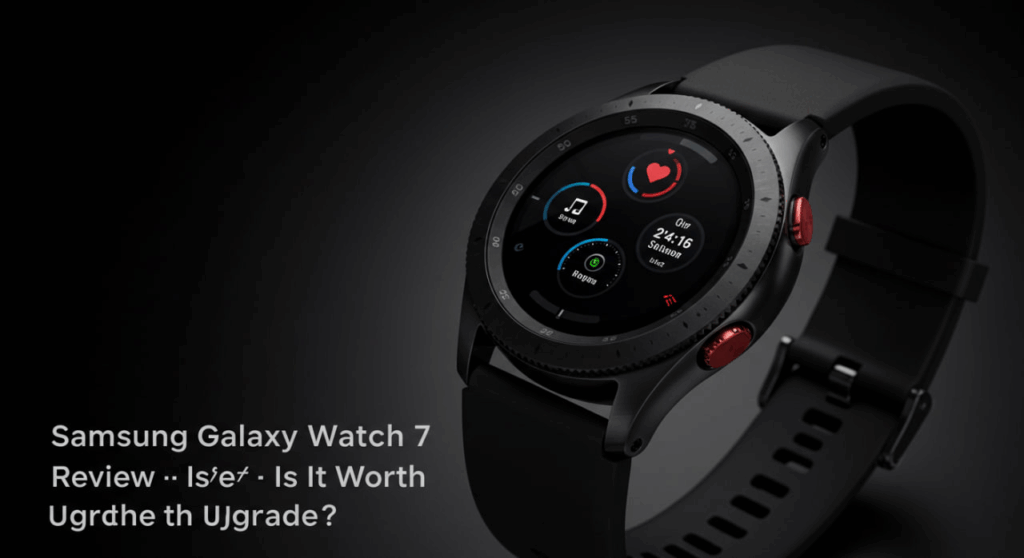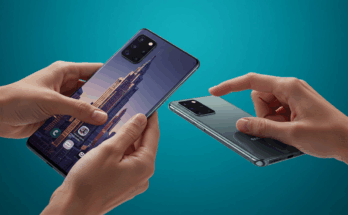The Samsung Galaxy Watch 7 has entered the smartwatch arena with a promise of refined performance, advanced AI-powered health tracking, and a familiar yet polished design. As the latest iteration in Samsung’s celebrated Galaxy Watch lineup, it aims to solidify its position as the go-to Android smartwatch. But with competitors like the Google Pixel Watch 3 and Apple Watch Series 10 raising the bar, does the Galaxy Watch 7 bring enough to the table to justify an upgrade from its predecessor, the Galaxy Watch 6, or even older models like the Watch 4 or 5? In this in-depth review, we’ll explore its design, performance, health tracking capabilities, battery life, and more to help you decide if this wearable is worth your investment.
Design and Build Quality
A Familiar Yet Refined Aesthetic
At first glance, the Samsung Galaxy Watch 7 doesn’t stray far from the sleek, circular design that has defined the Galaxy Watch series since the Watch 4. Available in 40mm and 44mm sizes, it comes in three color options: Green, Cream (exclusive to the 40mm model), and Silver (exclusive to the 44mm model). The aluminum chassis, paired with a sapphire crystal display, ensures durability with an IP68 rating, 5ATM water resistance, and MIL-STD-810H certification for extreme conditions. The 2,000-nit AMOLED touchscreen (1.3-inch for 40mm, 1.5-inch for 44mm) is vibrant and readable even in direct sunlight, making it ideal for outdoor use.
The new Sport band, included with the Watch 7, is grippy without being sticky, designed to stay secure during sweaty workouts. However, some users with smaller wrists may find the 44mm model’s lug-to-lug span slightly bulky, and the taller health sensor array makes it sit higher on the wrist than its predecessor. While the design is undeniably premium, it lacks the bold flair of the Galaxy Watch Ultra or the unique edge-to-edge look of the Pixel Watch 3. For those who value continuity and understated elegance, though, the Watch 7’s design hits all the right notes.
Performance and Software
Powered by a 3nm Exynos Chip and Wear OS 5
Under the hood, the Galaxy Watch 7 boasts Samsung’s first 3nm Exynos chip, delivering a noticeable boost in performance over the Galaxy Watch 6. Apps like Spotify, Samsung Health, and Messages open swiftly, and navigation feels snappy and fluid. Running on Wear OS 5—the first smartwatch to do so—the Watch 7 offers a polished user interface with smooth animations and intuitive controls. Gesture controls, such as double-tapping your fingers to take a photo or silence an alarm, add a layer of convenience, though these are exclusive to Samsung phone users.
The integration of Galaxy AI enhances the experience, particularly with features like suggested replies for messages and personalized wellness tips. However, these AI-powered features require a Samsung Galaxy phone, which may limit the watch’s full potential for non-Samsung Android users. The Watch 7 also comes preloaded with Google Gemini, replacing Google Assistant, offering more natural conversational interactions and advanced task handling. With 32GB of storage, you can store more apps, music, and data than ever before, making it a versatile companion for both work and play.
Health and Fitness Tracking
AI-Powered Insights and Advanced Sensors
The Galaxy Watch 7 shines in its health and fitness tracking capabilities, thanks to the upgraded BioActive sensor, which features 13 LEDs (up from 6 in the Watch 6) for up to 30% greater accuracy during high-intensity workouts. It tracks a wide array of metrics, including heart rate, blood oxygen, stress, body composition via bioelectrical impedance analysis (BIA), and even advanced glycation end products (AGEs) for metabolic insights. The standout feature is the FDA-approved sleep apnea detection, a first for a general-use smartwatch, which monitors breathing patterns during sleep to alert users to potential issues.
The Energy Score, a Galaxy AI-powered feature, provides a daily assessment (0-100) of your physical and mental readiness based on sleep quality, heart rate, and activity levels from the previous day. While some users may find it redundant—akin to checking the weather when you can look outside—it’s a motivational tool for those striving to improve their wellness habits. Sleep tracking is particularly impressive, offering detailed reports on sleep stages, duration, and quality after just one night, complete with a “sleep animal” persona (e.g., a penguin for frequent wake-ups). However, sleep tracking accuracy can falter if the “Limit health features” setting is enabled by default, requiring manual adjustment.
For fitness enthusiasts, the Watch 7 supports automatic and manual workout tracking, including running, cycling, swimming (with stroke analysis and SWOLF score), and a new triathlon mode. Dual-band GPS improves location accuracy, though some tests have shown inconsistent results in open environments, particularly for open-water swimming. While not perfect, the Watch 7’s health tracking is robust and rivals top competitors like Garmin and Fitbit, especially when paired with the Samsung Health app.

Battery Life and Charging
A Mixed Bag
Battery life remains a sticking point for the Galaxy Watch 7. With a 300mAh battery (40mm) or 425mAh battery (44mm), it typically lasts about one to two days, depending on usage. Enabling always-on display (AOD), continuous heart rate monitoring, and GPS significantly reduces this to around 24 hours, as noted by users on platforms like Reddit. Disabling features like AOD, Wi-Fi, and NFC can extend battery life to nearly three days, but this compromises the smartwatch experience.
A notable downside is the loss of reverse wireless charging compatibility with Samsung phones, a feature present in older models. The proprietary charger is fast, but the lack of wireless charging support feels like a step backward. For comparison, the Galaxy Watch Ultra offers slightly better battery life, while the Pixel Watch 3 can stretch to a day and a half with similar usage. If battery life is a priority, you may need to manage settings carefully or consider the Ultra model.
Connectivity and Ecosystem
Best with a Galaxy Phone
The Galaxy Watch 7 pairs seamlessly with any Android phone running Android 11 or higher, requiring the Galaxy Wearable and Samsung Health apps. However, its full suite of features—such as ECG, blood pressure monitoring, and AI-powered insights—requires a Samsung Galaxy phone. This ecosystem lock-in may frustrate non-Samsung users, though basic functionality remains intact. LTE models offer standalone calling and messaging, and the new Galaxy Watch for Kids software option adds parental controls and educational apps for younger users.
Call quality is decent, and the watch handles notifications, music playback, and smart home controls with ease. Integration with the Samsung Health app is a highlight, offering a clean, subscription-free interface for tracking fitness goals, water intake, and even cycle tracking. Pairing the Watch 7 with a Galaxy Ring further enhances accuracy and extends battery life by offloading some sensor tasks, making it a compelling option for Samsung ecosystem enthusiasts.
Should You Upgrade?
Comparing to the Galaxy Watch 6 and Beyond
For Galaxy Watch 6 owners, the decision to upgrade is tricky. The Watch 7 offers a faster chip, improved GPS, a more accurate health sensor, and new AI features, but the design and display are nearly identical, and battery life hasn’t improved significantly. If you’re upgrading from a Watch 4 or 5, the performance boost, Wear OS 5, and advanced health tracking (like sleep apnea detection) make a stronger case. Priced at $299.99 for the 40mm Bluetooth model and $329.99 for the 44mm, the Watch 7 often dips to the low $200s during sales, making it a cost-effective choice compared to the $399.99 Galaxy Watch Ultra.
Compared to rivals, the Watch 7 holds its own against the Google Pixel Watch 3, which offers unique Fitbit insights but requires a subscription for premium features. The Apple Watch Series 10 is a formidable competitor for iOS users, but Android users will find the Watch 7’s integration with Samsung’s ecosystem and subscription-free health tracking more appealing. If you’re an athlete prioritizing pinpoint GPS accuracy, a Garmin watch might still be a better fit.
Conclusion
The Samsung Galaxy Watch 7 is a refined, feature-packed smartwatch that excels in health and fitness tracking, particularly for Samsung phone users. Its AI-powered Energy Score, FDA-approved sleep apnea detection, and robust Samsung Health app make it a standout in the Wear OS ecosystem. However, its battery life and ecosystem limitations may deter some users, and the incremental upgrades over the Watch 6 might not justify the cost for current owners. For those seeking a reliable, stylish, and health-focused Android smartwatch, the Galaxy Watch 7 is a strong contender—just don’t expect a revolutionary leap forward.
FAQ
Is the Samsung Galaxy Watch 7 compatible with non-Samsung Android phones?
Yes, the Galaxy Watch 7 works with any Android phone running Android 11 or higher, but some features, like ECG, blood pressure monitoring, and Galaxy AI tools, require a Samsung Galaxy phone.
How accurate is the sleep apnea detection feature?
The sleep apnea detection is FDA-approved and uses advanced sensors to monitor breathing patterns during sleep. It’s a reliable tool for identifying potential issues, but a medical sleep study is recommended for a formal diagnosis.
Can the Galaxy Watch 7 be used for swimming?
Yes, with a 5ATM water resistance rating, the Watch 7 is suitable for swimming and offers stroke analysis and SWOLF score tracking for improved performance monitoring.
How long does the battery last with heavy usage?
With always-on display, continuous heart rate monitoring, and GPS enabled, the battery typically lasts about 24 hours. Disabling these features can extend it to two or three days.
Is it worth upgrading from the Galaxy Watch 6?
For Galaxy Watch 6 owners, the upgrades (faster chip, improved GPS, new health sensor, and AI features) are incremental. If you’re happy with your current watch, you might wait for the Galaxy Watch 8. However, users of older models like the Watch 4 or 5 will notice significant improvements.
Where can I find the best deals on the Galaxy Watch 7?
Retailers like Amazon often offer the Galaxy Watch 7 at discounted prices, sometimes as low as $200 during sales events like Prime Day or Black Friday. Check Samsung’s official website for trade-in deals as well.



